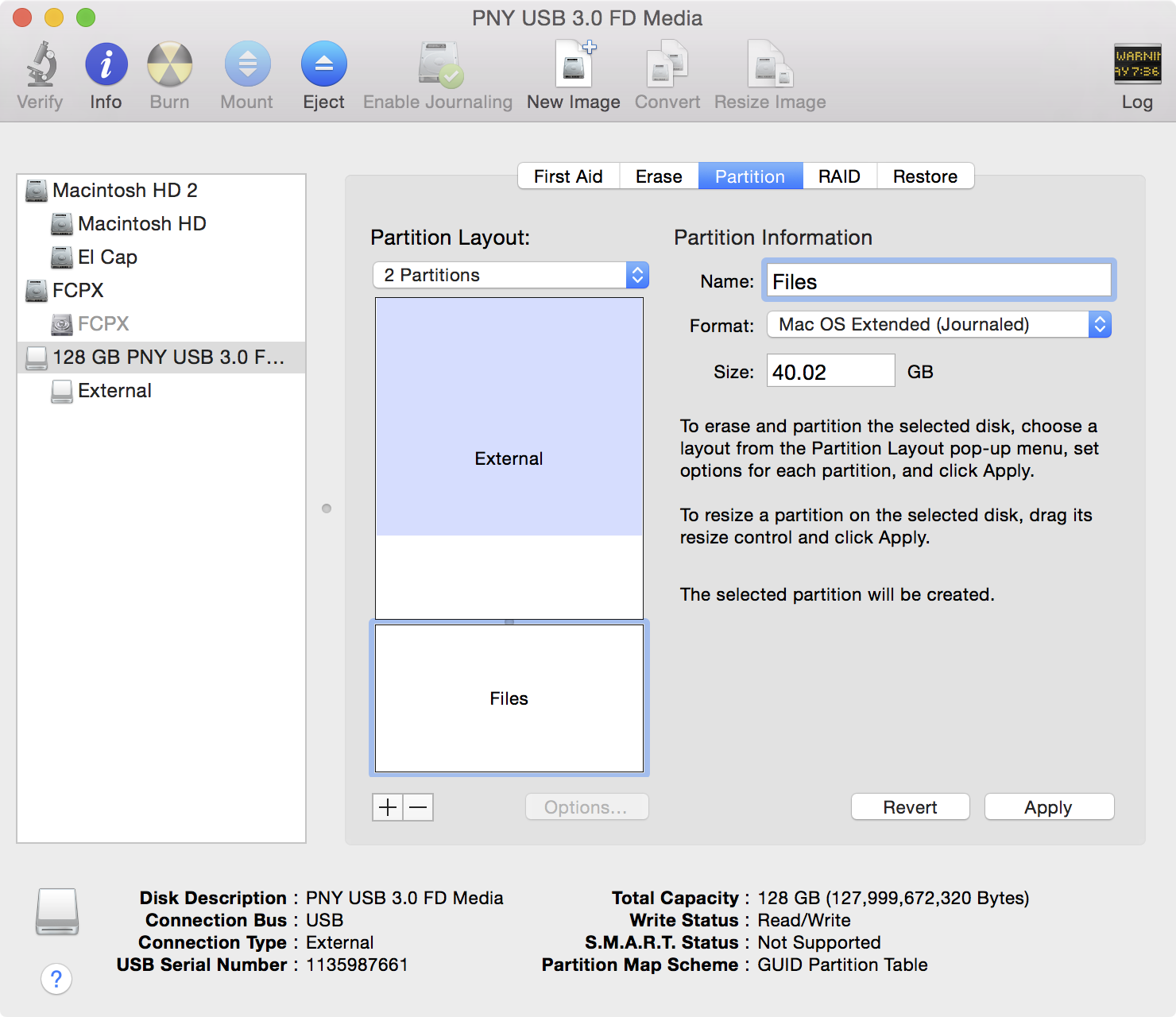

- #FORMAT BACKUP DRIVE FOR TIME MACHINE DISK UTILITY MAC GUID PARTITION MAP MAC OS X#
- #FORMAT BACKUP DRIVE FOR TIME MACHINE DISK UTILITY MAC GUID PARTITION MAP WINDOWS#
Open the Disk Utility located within the Utilities folder inside of Applications. After clicking “New Simple Volume” complete the “New Simple Volume Wizard” to format and assign a drive letter. Right-click on the unallocated space, and select “New Simple Volume”. Select either Master Boot Record (MBR) or GUID Partition Table (GPT). The Disk Management Console should automatically detect a new non-initialized drive ask to initialize it. Logged in as an administrator, open the Windows Disk Management Console by pressing Windows + R to open the Run dialog box. If you have any questions at all, please comment below or email We’re happy to help! You may give the partition a name you will see associated with the drive in Finder, we chose to leave ours as the default “Untitled 1”: Click on the “Partition Layout” drop-down menu and select “1 Partition”. You can create multiple partitions if you want, but this guide assumes that you, like most people, want to access the entire drive through a single partition. We recommend GUID for most users.Īfter clicking “OK” we now need to partition the drive. Because our example hard drive is greater than 2TB Apple does not give us the option to select MBR, only GUID (GPT) and Apple Partition map. Apple Partition Map is also an older legacy method of initializing drives, and is only necessary if you need to use the drive as a start up disk on a PowerPC-based Mac. MBR is the older legacy method of initializing drives, and is only necessary if you need to access the drive on a Windows XP system (XP is incompatible with GPT and Apple Partition Map). Here we have options for GUID ( GPT) and MBR, but we’re also presented with Apple Partition Map. The quickest way to open the Disk Management Console in any Windows version is to press the Windows and R keys together on your keyboard to open the Run dialog box: It lets you create partitions on your new blank hard drive so Windows can make use of it for data storage and recognize it as a drive letter in Windows Explorer. This console shows all of the drives connected to the computer and information about how they are currently configured. Windowsįor Windows XP, Vista, 7, 8/8.1, and Windows 10, the experience is basically the same, and we’ll focus on using the Windows Disk Management Console. If you wish to skip to our quick instructions without the extended walk-through information click here. If you have multiple external hard drives connected we recommend disconnecting them all prior to initializing your new drive as well, just as a precaution. However, if there are other drives in use on your system, it’s absolutely critical to pay close attention that you don’t erase the wrong drive. In the case of a new drive, that’s not a matter for concern-it does not have any data on it yet to worry about. Initializing and formatting a hard drive will erase *all* information on that drive. If you are trying to access existing data or attempting data recovery on your hard drive and are encountering issues, please see this post here.īefore we get started, a brief word of caution is essential. We’ll be using a 4TB hard drive as our example. They also apply to new hard disks that are installed inside your computer and potentially other docking stations/enclosures/adapters. The following steps apply to our USBC-SATA-V, USB3-SATA-UASP1, USB3-SATA-U3, and our entire Plugable Storage System lineup. 
:max_bytes(150000):strip_icc()/002-how-to-downgrade-from-catalina-to-mojave-4797831-a9a475ccecc84aeba940f4db6e0bcfdc.jpg)

We’ll cover the most common scenarios we run into, starting with Windows and finishing with Mac OS X instructions. Initializing prepares the drive to be used by the computer, partitioning sets aside specific areas of the disk for data, and formatting sets up the framework the computer uses to store that data.



:max_bytes(150000):strip_icc()/002-how-to-downgrade-from-catalina-to-mojave-4797831-a9a475ccecc84aeba940f4db6e0bcfdc.jpg)



 0 kommentar(er)
0 kommentar(er)
